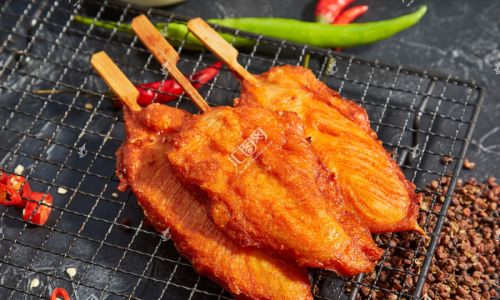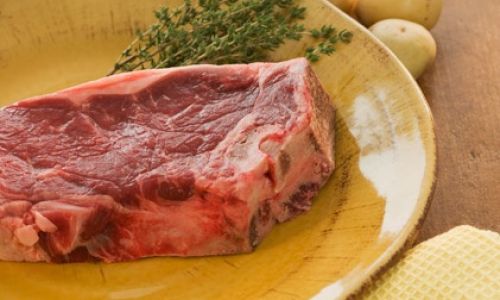Table of content
Sichuan cuisine, renowned for its bold flavors and fiery kick, has captivated food enthusiasts worldwide with its unique blend of spicy, savory, and numbing sensations. Among its many iconic dishes, Sichuan-style chicken tenderloin—or Chuan Xiang Ji Liu—stands out as a beloved street food and home-cooked favorite. This dish combines tender chicken strips marinated in aromatic spices, coated in a crispy batter, and fried to golden perfection, all while delivering the signature ma la (numbing-spicy) flavor that defines Sichuan cooking. Whether you’re a seasoned chef or a curious home cook, this guide will walk you through the steps to recreate this culinary masterpiece, ensuring every bite bursts with authenticity and flavor.
The Essence of Sichuan Cuisine
Before diving into the recipe, it’s essential to understand the culinary philosophy behind Sichuan dishes. Sichuan province, located in southwest China, is often called the “Land of Abundance” due to its fertile soil and diverse agriculture. This richness is reflected in its cuisine, which emphasizes layered flavors, textural contrasts, and the creative use of spices. Key ingredients like Sichuan peppercorns, dried chilies, garlic, and ginger form the backbone of many dishes, creating a symphony of taste that tantalizes the palate.

The ma la flavor profile—a combination of má (numbing) from Sichuan peppercorns and là (spicy) from chili peppers—is central to this dish. Unlike the burning heat of other cuisines, Sichuan peppercorns impart a tingling, citrusy numbness that elevates the dish without overwhelming it. Paired with the smoky depth of dried chilies and the umami-rich marinade, the result is a harmonious explosion of flavor that lingers long after the last bite.
Ingredients: Building Blocks of Flavor
To achieve the perfect balance of spice, crunch, and tenderness, gathering high-quality ingredients is paramount. Here’s a breakdown of what you’ll need:
For the Marinade
- 500g boneless, skinless chicken breast: Cut into thin, even strips for quick cooking and even seasoning.
- 2 tbsp soy sauce: Use dark soy sauce for richness or light soy sauce for saltiness.
- 1 tbsp Shaoxing wine: A Chinese rice wine that adds depth and neutralizes poultry odors. Substitute with dry sherry if unavailable.
- 1 tbsp cornstarch: Creates a tender texture by locking in moisture.
- 1 egg white: Lightens the marinade and aids in crisping.
- 1 tsp white pepper: Offers a mild, floral heat.
- 1 tbsp Sichuan peppercorns: Toasted and ground for maximum flavor.
- 3 garlic cloves, minced: Adds aromatic pungency.
- 1-inch ginger, grated: Provides a fresh, zesty undertone.
For the Coating
- 1 cup breadcrumbs: Panko for extra crunch or regular for a denser texture.
- 2 tbsp chili flakes: Adjust to taste for spiciness.
- 1 tsp Sichuan peppercorns, ground: Enhances the numbing sensation.
- 1 tsp salt: Balances the heat and umami.
For Frying
- Vegetable oil: Peanut or canola oil works best for high-heat cooking.
Optional Garnishes and Dips
- Fresh cilantro: For a burst of color and freshness.
- Toasted sesame seeds: Adds nutty richness.
- Chili oil or sweet-and-sour sauce: For dipping.
Step-by-Step Preparation
Preparing the Chicken
Start by slicing the chicken breast into ½-inch thick strips. Ensure uniformity in size to guarantee even cooking. Place the strips in a bowl and set aside.
Crafting the Marinade
The marinade is the soul of this dish, infusing the chicken with layers of flavor. In a small pan, toast the Sichuan peppercorns over medium heat until fragrant (1-2 minutes). Grind them coarsely using a mortar and pestle or spice grinder.
In a mixing bowl, combine the soy sauce, Shaoxing wine, cornstarch, egg white, white pepper, minced garlic, grated ginger, and half of the ground Sichuan peppercorns. Whisk until smooth, then pour the mixture over the chicken strips. Toss gently to coat, ensuring each strip is evenly covered. Cover and refrigerate for at least 30 minutes (or up to 4 hours) to allow the flavors to meld.
Creating the Spiced Coating
While the chicken marinates, prepare the coating. In a shallow dish, mix the breadcrumbs, chili flakes, remaining Sichuan peppercorns, and salt. For an extra crunch, toast the breadcrumbs in a dry pan before combining with the spices.
Coating the Chicken
Remove the marinated chicken from the refrigerator. One by one, dredge each strip in the breadcrumb mixture, pressing gently to adhere. Ensure thorough coating for maximum crispiness.
Frying to Perfection
Heat the vegetable oil in a deep skillet or wok over medium-high heat. The oil is ready when a small breadcrumb sizzles upon contact (around 350°F/175°C).

Carefully lower the coated chicken strips into the hot oil, working in batches to avoid overcrowding. Fry for 3-4 minutes per side, or until golden brown and cooked through. Use tongs to flip the strips gently.
Once cooked, transfer the chicken to a wire rack or paper towel-lined plate to drain excess oil. Sprinkle with a pinch of salt while still hot.
Serving and Presentation
Sichuan-style chicken tenderloin is best enjoyed immediately, while the coating remains crisp. Arrange the strips on a platter and garnish with cilantro and sesame seeds. Serve with chili oil, sweet-and-sour sauce, or a side of steamed jasmine rice.
Tips for Success
- Marinating Time: Allow the chicken to marinate for at least 30 minutes. Overnight marination intensifies the flavor.
- Oil Temperature: Maintain consistent heat to prevent sogginess. If the oil is too hot, the coating will burn; if too cool, the chicken will absorb excess oil.
- Spice Level: Adjust chili flakes to your preference. For a milder version, reduce the quantity or omit them entirely.
- Baking Alternative: For a healthier twist, bake the coated chicken at 400°F (200°C) for 15-20 minutes, flipping halfway.
The Cultural Significance of Sichuan-Style Chicken Tenderloin
Beyond its culinary appeal, this dish embodies the spirit of Sichuan’s street food culture. Originating from bustling night markets and humble food stalls, it reflects the region’s resourcefulness and love for bold, unapologetic flavors. Today, it’s a staple at family gatherings, festivals, and casual dinners, bridging generations through shared enjoyment.
Pairing Suggestions
- Beverages: Pair with jasmine tea to cleanse the palate or a crisp lager to balance the spice.
- Sides: Serve with stir-fried vegetables, pickled daikon, or garlic-fried rice.
- Dips: Experiment with black vinegar dipping sauce or a creamy peanut sauce for contrast.
Common Pitfalls and How to Avoid Them
- Soggy Coating: Ensure the oil is hot enough before frying. Avoid overcrowding the pan, which lowers the temperature.
- Dry Chicken: Overcooking is the enemy. Use a meat thermometer to ensure the internal temperature reaches 165°F (74°C).
- Bland Flavor: Toast Sichuan peppercorns before grinding to release their essential oils. Don’t skip the marinade!
Conclusion
Sichuan-style chicken tenderloin is more than a recipe—it’s a journey through the heart of Sichuan cuisine. By mastering the interplay of spices, textures, and techniques, you’ll create a dish that pays homage to tradition while delighting modern palates. Whether you’re hosting a dinner party or craving a weeknight indulgence, this recipe promises to deliver fiery flavors and crispy satisfaction. So, gather your ingredients, embrace the heat, and savor the magic of Sichuan cooking in your own kitchen.
Final Note: For those new to Sichuan peppercorns, start with a small quantity and gradually increase as your tolerance grows. The goal is to experience the unique tingling sensation without overwhelming your taste buds. With practice, you’ll find the perfect balance that makes this dish unforgettable. Happy cooking!






0 comments